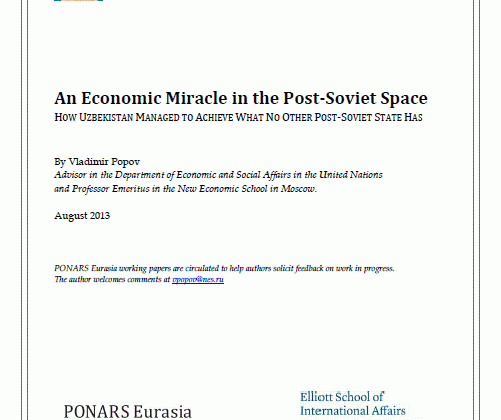In the early 1990s, many members of the Russian elite were proponents of the country’s liberal reforms. Moreover, American-style democracy and market economics were popular among Russia’s general population. However, as Figure 1 shows, the generation of Russian elite that were born in the 1960s, a generation that was once among the most pro-American, has now become rather anti-American, even compared to other generations. Ominously, there are few pro-American individuals among the younger cohorts of the Russian elite. Mass surveys also show that most Russians, including the younger generations, hold negative attitudes toward the United States. Furthermore, college education and high social status seems to exacerbate anti-American sentiment, leading the elite to become more anti-American than the public-at-large. This memo addresses the nature of this drastic change and discusses some policy implications.1
Researchers often take two approaches to explaining anti-Americanism in Russia. They present anti-Americanism as either issue-oriented or instrumental. According to the issue-oriented theory of anti-Americanism, negative attitudes toward the United States emerge as a reaction to its foreign policy, especially to specific tensions in Russian-U.S. relations at a particular moment. Instrumental theories emphasize the role of the ruling elite in maintaining anti-American sentiment among the mass public for their own selfish goals. It emanates from politicians who seek popular support and/or a lightning rod to divert people’s personal and situational frustrations.
In the case of Russia, neither of these two theories are sufficient to explain the evidence. Polls show that anti-American sentiment peaks at certain critical periods in U.S.-Russian relations, such as during the Kosovo crisis of 1999, the 2003 invasion of Iraq, and the Russian-Georgian war of 2008 (see Figure 2). This would seem to bolster the case for issue-oriented anti-Americanism. However, there are no obvious peaks before 1999 even though similar developments were occurring then, like Operation Desert Storm in Iraq or Western support for Bosnians and Croats in their wars against Serbs. The data also show that elite anti-Americanism surged between 1993 and 1995, roughly half a decade before the mass spread of anti-American sentiment that the Kosovo crisis provoked.
These findings suggest that the instrumental theory of anti-Americanism in Russia also has merit. Elites may have led the masses to anti-Americanism. However, these findings also raise a question about the source of this change among elites. The gap in elite and public attitudes that emerged between 1993 and 1995 leads us to propose an alternative model for explaining the growth of anti-American sentiment in Russia.
First, we argue that the early change in Russian elite perceptions of the United States is an effect of the ressentiment of the early 1990s. Friedrich Nietzsche introduced the concept of ressentiment to describe a slave’s envy and hatred of his master. Sociologist Liah Greenfeld famously used the concept to account for the rise of nationalism in various states. She used ressentiment to refer to a political elite’s feelings of disappointment with a model country that they want to emulate. Their attitude changes from idealization and admiration to hostility and resentment. The source of this transformation is elite frustration over the failure to modernize their country along some foreign model. We argue that a similar phenomenon took place in Russia and became the initial driver of anti-Americanism in the 1990s. In that context, confidence in the country’s political course and a positive appraisal of its economic development could reduce the level of anti-Americanism, whereas those who felt more frustrated were more likely to express anti-American sentiments.
Second, we argue that when Russian elites eventually passed on their anti-American sentiment to the mass public, it became a factor in its own right in the context of the still-competitive Russian political arena of 1999-2000. Since then, it has been rational for politicians to instrumentally apply anti-American rhetoric in bids to garner public support. Such rhetoric has had consequences. In particular, anti-American sentiments became popular among younger cohorts who were socialized at a time of economic growth and had no obvious reason to be frustrated by the U.S. model society. Instead, they were affected by the anti-American rhetoric of an economically successful government. Therefore, since around 2003, confidence in the Russian government and a positive appraisal of Russia’s economy have correlated positively with anti-American sentiment. In other words, in the 2000s, happier people were more likely to be anti-American, which is a reversal of the trend of the 1990s. Continuation of this newer trend tipped the balance of public opinion around 2006; anti-Americanism has been the dominant discourse since.
Finally, anti-Americanism grew further mainly due to some non-committed people conforming to the majority’s opinion and jumping on the bandwagon at critical moments, like the 2008 Russian-Georgian war, when the Russian media was particularly vocal about U.S. policies. Russian elites still remain more anti-American by far than the public-at-large, which suggests that the instrumental theory of anti-Americanism has, in fact, only limited value. The elites so far have abstained from whipping up the anti-American sentiments of the mass publics to their own level.
Yet the consequences are clear. Russian elites and the public-at-large have been shifting away from a pro-American attitude for a long time. It will take at least as long a time to reverse the situation. Furthermore, this shift coincided with nation-building efforts and the rise of nationalism, which according to many observers has become the only force capable of unifying Russian society. Anti-Americanism seems to be a core value in this ideology. We can thus expect that the Russian elite will consist soon enough of individuals who have no meaningful Soviet experience but behave as if they are still living in the Cold War.
Thus, any attempt at another U.S.-Russia reset will likely fail unless it is conceived as a long-term strategy, rather than a short-term policy keen to achieve specific instrumental goals. This will be particularly challenging to do, however, with regard to the promotion of democracy and human rights. If the human rights agenda is used as a quid pro quo in geopolitical bargaining, it will likely even further undermine the United States’ few remaining sympathizers inside Russia. If this agenda is abandoned, however, it will likely alienate them.
Given that a grand reversal of the long-term trend is unlikely, the next question to consider is how wide a national interest do Russian elites perceive Russia to possess. The USSR was a world power with global interests. Do Russian elites view their country to have similarly broad interests? Will Russia try and challenge the United States globally? Are we really going to return to Cold War times?
Our answer, based on data presented in Table 1, is quite certain. Despite popular invocations of Russia’s importance and influence (often extending well beyond Russia’s borders), one of the clearest generalizations that emerges is that the younger the elites, the more likely they are to say that the domain of Russia’s national interest should be limited to its own borders (Figure 3). Moreover, this is part of a larger trend; Russian elites in general have increasingly agreed with this sentiment over time. This is a very significant change. While the United States may expect opposition to its policies from Russia here and there, a head-on collision is something Russian elites will likely want to avoid.
Figure 1. Is the United States a threat? (Elite by year and cohort)
[[{“type”:”media”,”view_mode”:”media_large”,”fid”:”1565″,”attributes”:{“alt”:””,”class”:”media-image”,”height”:”358″,”typeof”:”foaf:Image”,”width”:”480″}}]]Figure 2. Is the United States a threat? (Elite and public)
[[{“type”:”media”,”view_mode”:”media_large”,”fid”:”1566″,”attributes”:{“alt”:””,”class”:”media-image”,”height”:”396″,”typeof”:”foaf:Image”,”width”:”480″}}]]Figure 3. Great power aspirations by year and cohort
[[{“type”:”media”,”view_mode”:”media_large”,”fid”:”1567″,”attributes”:{“alt”:””,”class”:”media-image”,”height”:”330″,”typeof”:”foaf:Image”,”width”:”480″}}]]Table 1. Russian national interest
|
2004
|
2008
|
2012
|
|
|
Within Russia’s borders
|
28% (74)
|
36% (85)
|
60% (125)
|
|
CIS
|
51% (136)
|
28% (66)
|
15% (31)
|
|
Neighboring countries; only Europe or Asia; CIS
|
10% (27)
|
10% (23)
|
14% (29)
|
|
Eurasia and beyond, an almost global sphere of interest
|
10% (28)
|
26% (62)
|
11% (24)
|
1This memo draws on an ongoing research project at the Laboratory for Comparative Social Research, Higher School of Economics, directed by Eduard Ponarin. Contributors include William Zimmerman, Ronald Inglehart, Yegor Lazarev, Boris Sokolov, and Irina Vartanova. Any errors found in the memo are the responsibility of Eduard Ponarin. This research has been supported by the Russian Government (contract # 11.G34.310024) and the Valdai Club.
The key dataset in this research are six surveys of Russian elites done in 1993, 1995, 1999, 2004, 2008, and 2012. The total number of people interviewed each time is about 240. Respondents are real elites—they would be identified as being a member of the elite anywhere. They all live in Moscow, which is the financial, political, intellectual, and cultural center of Russia, a country centralized to a much greater extent than the United States. Comparative data for the general public was obtained from the New Russian Barometer project directed by Richard Rose (http://www.cspp.strath.ac.uk) and the Russian data from the World Values Survey project (http://www.worldvaluessurvey.org) covering roughly the same period.










